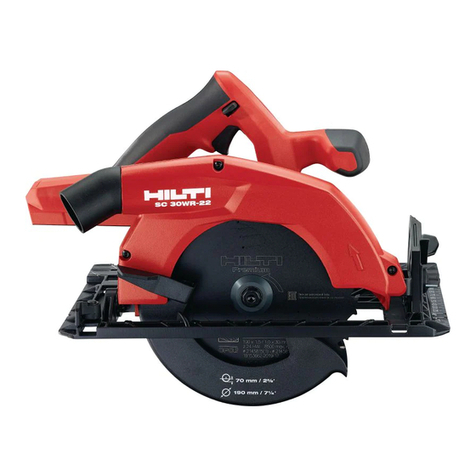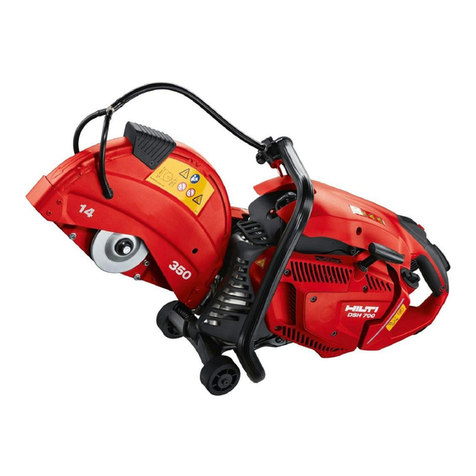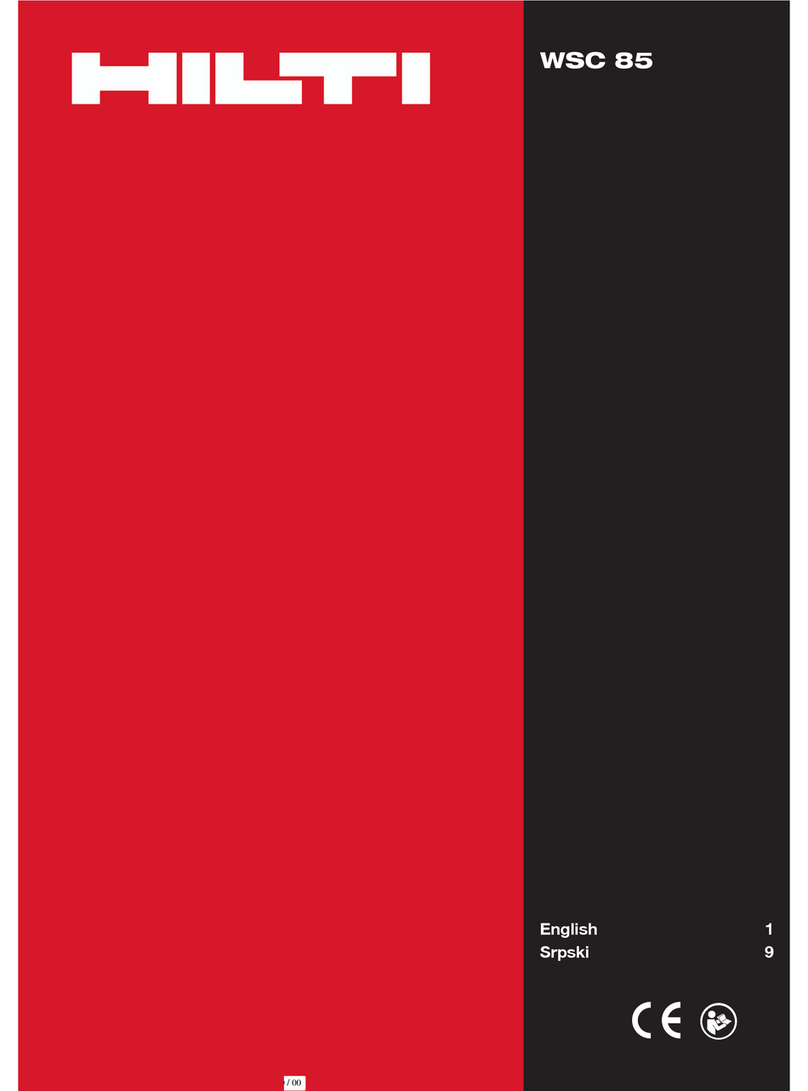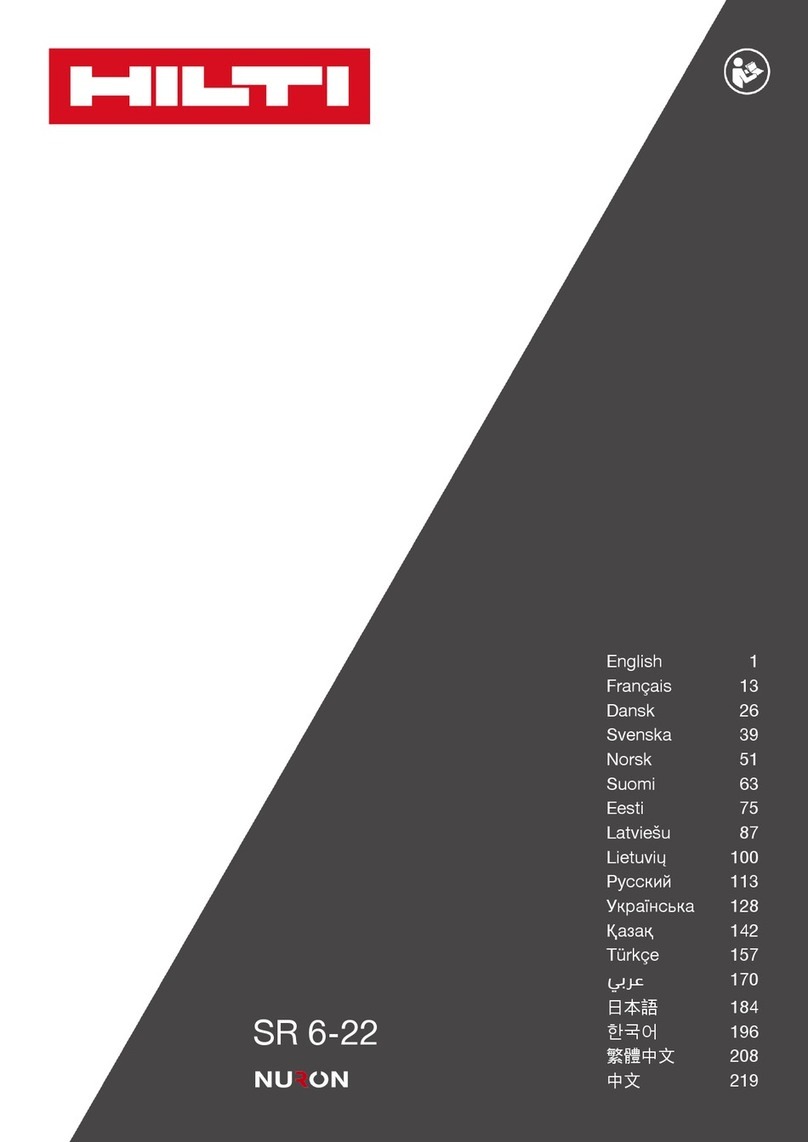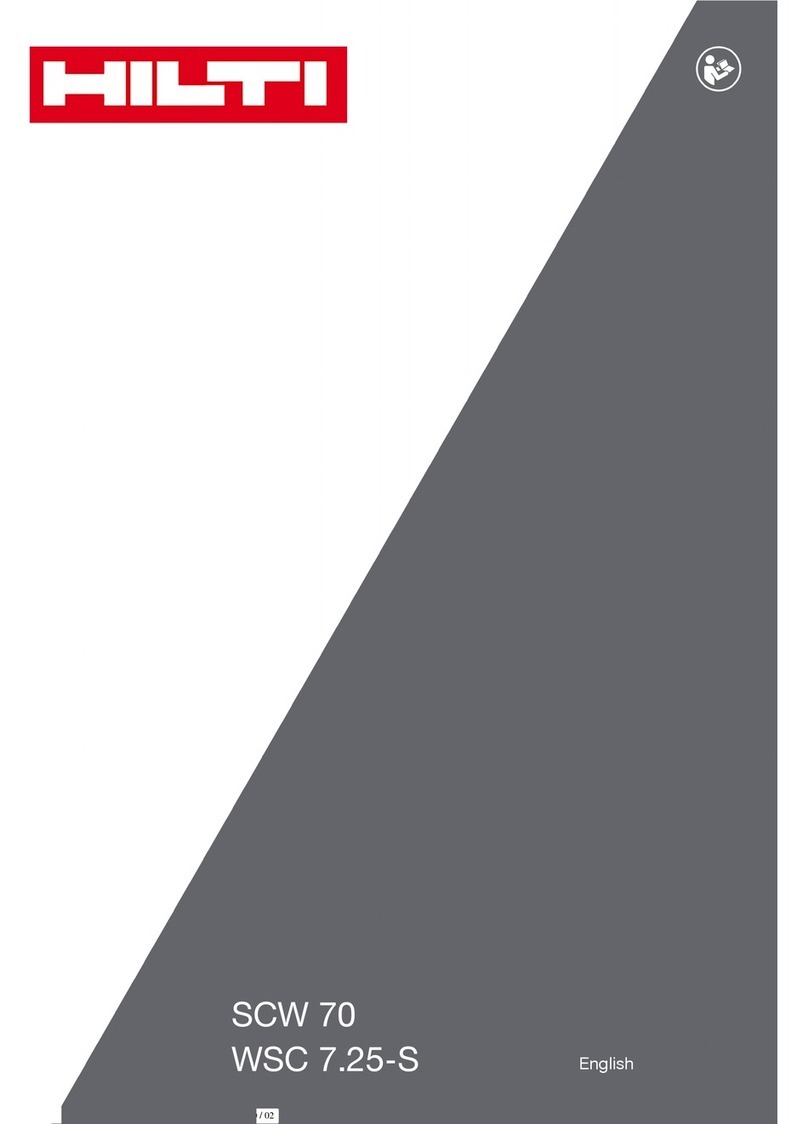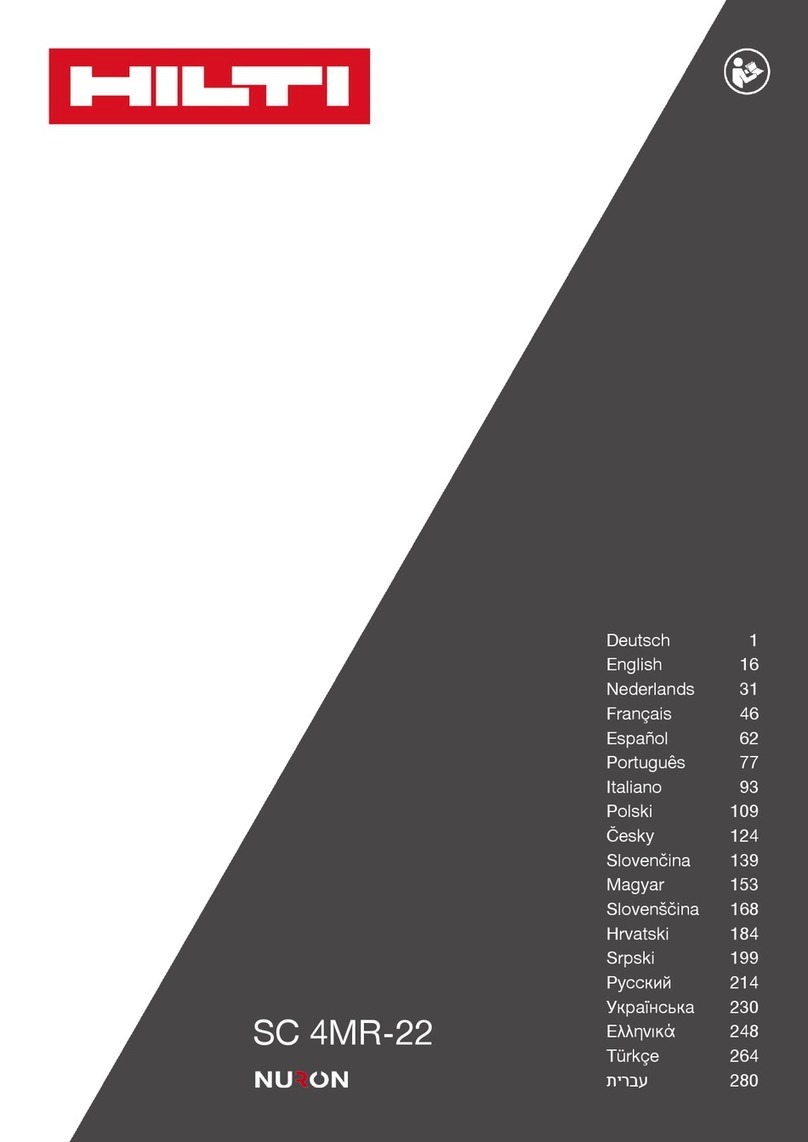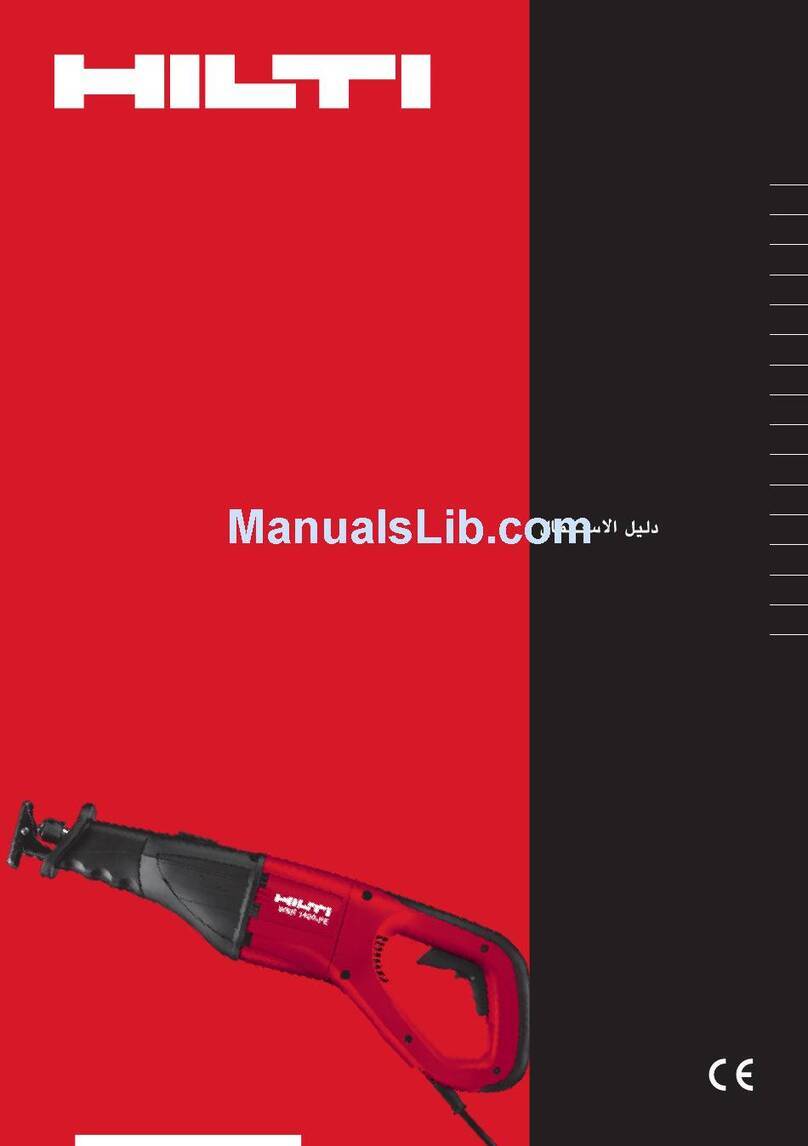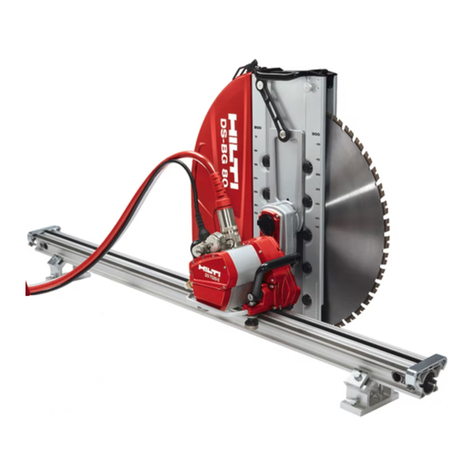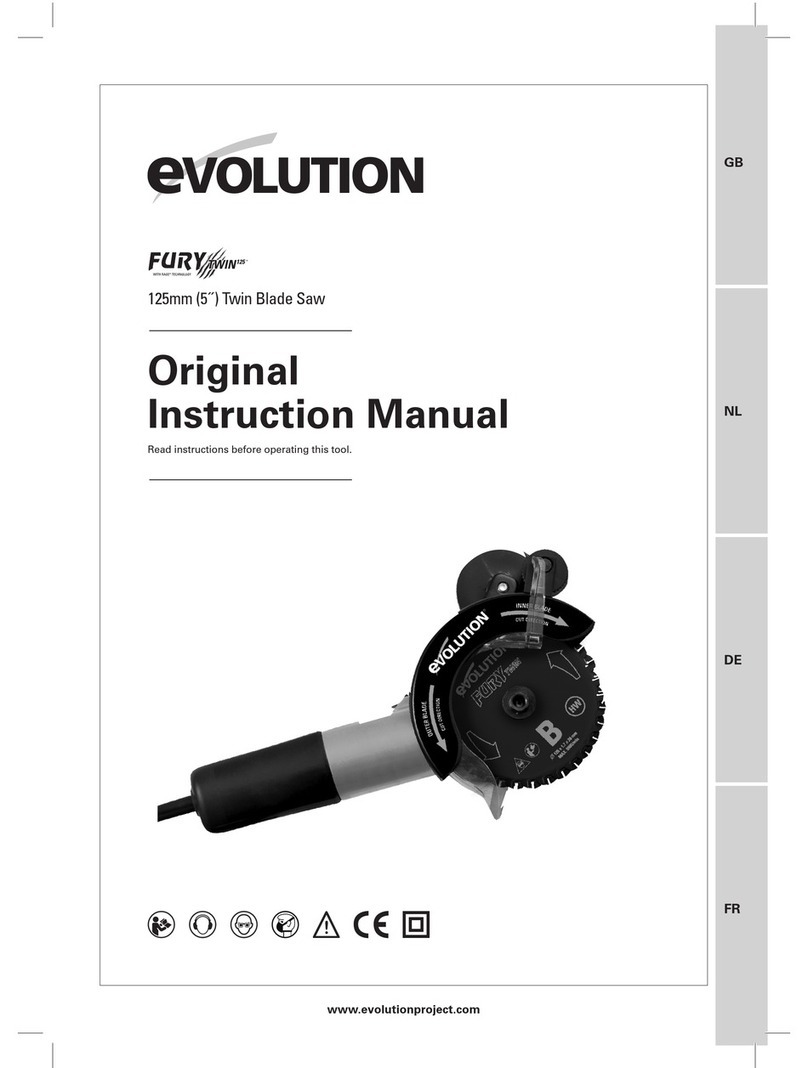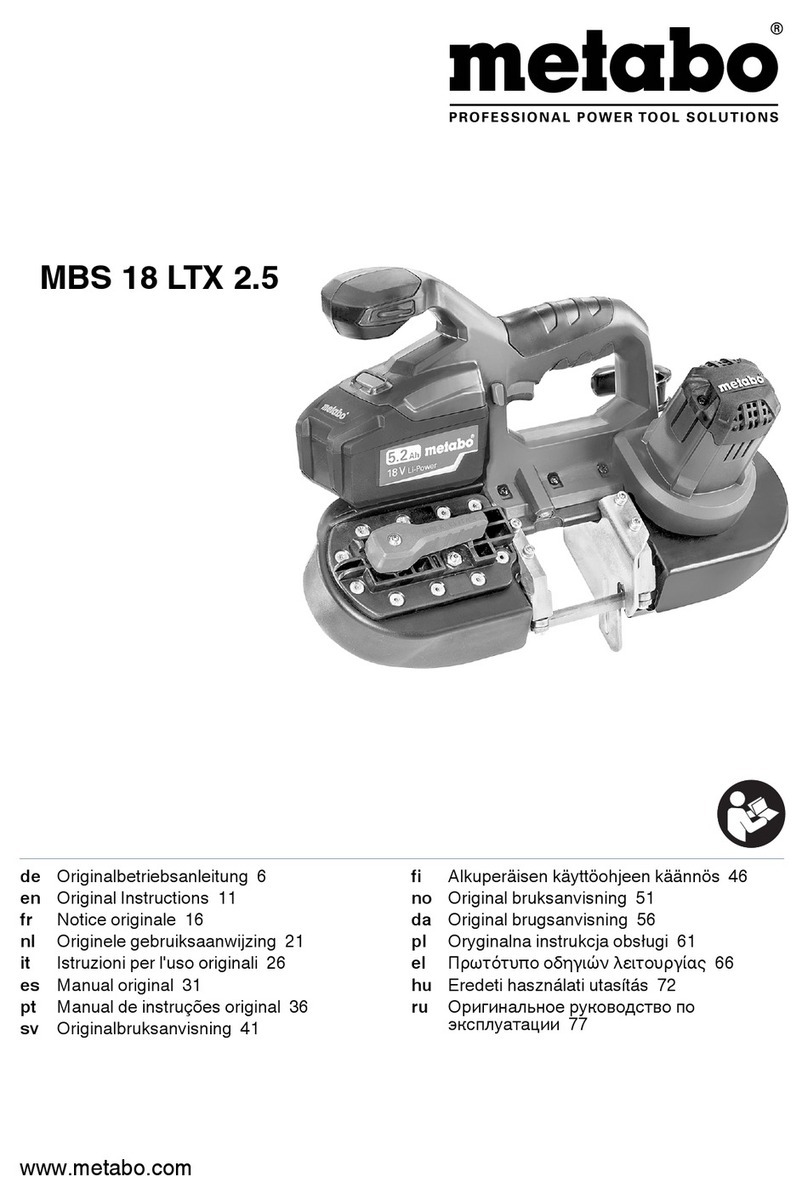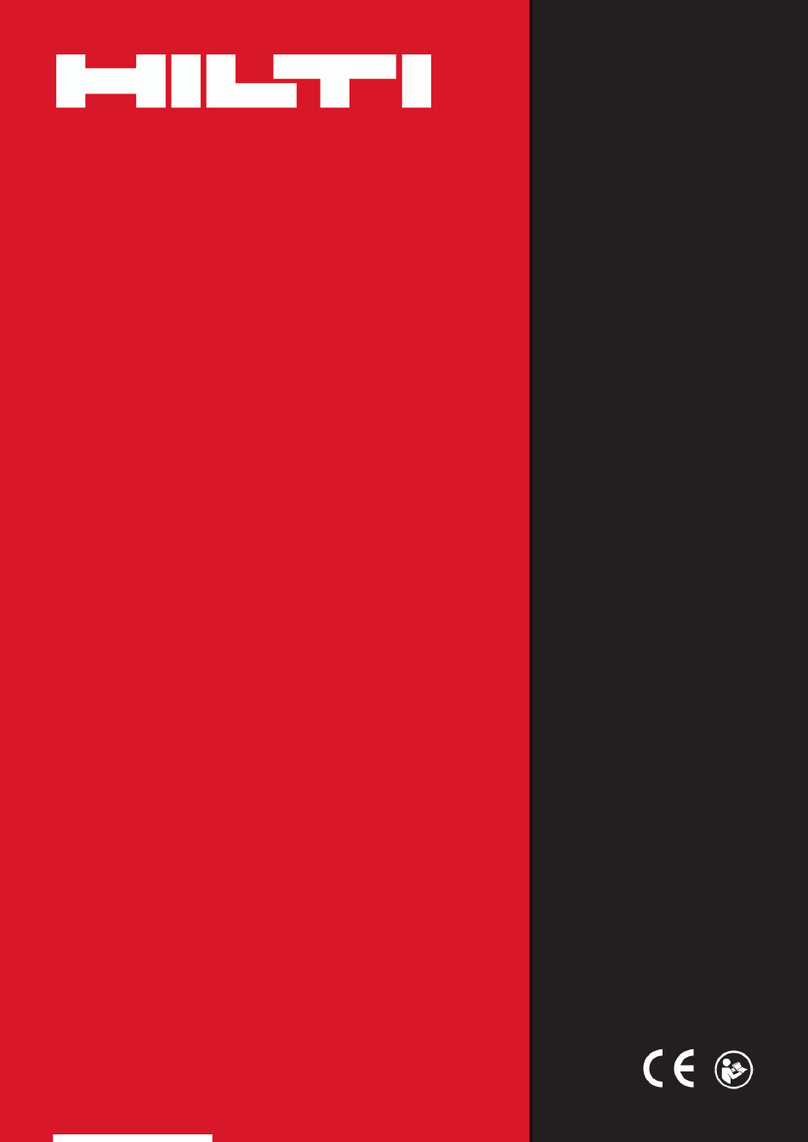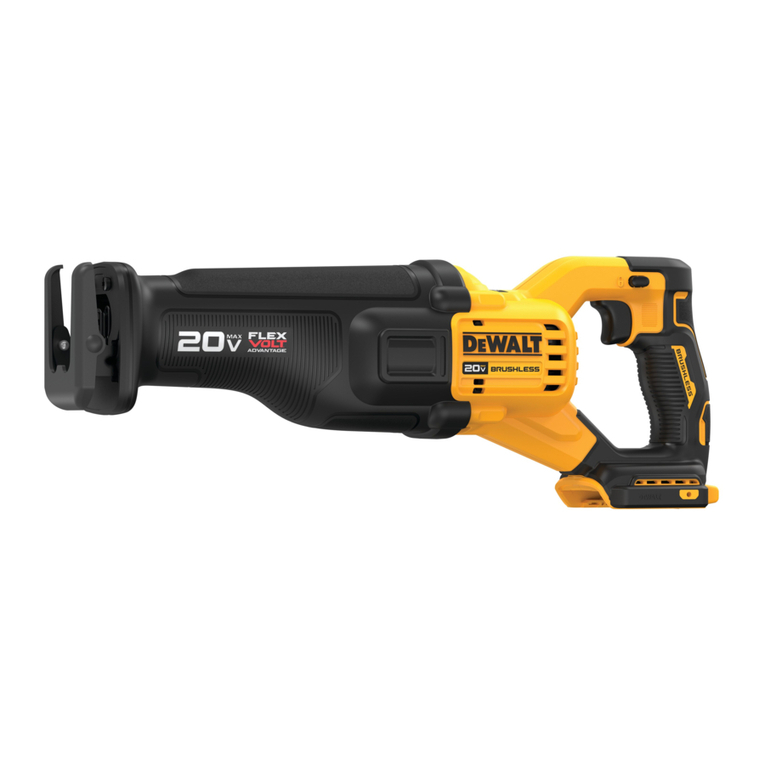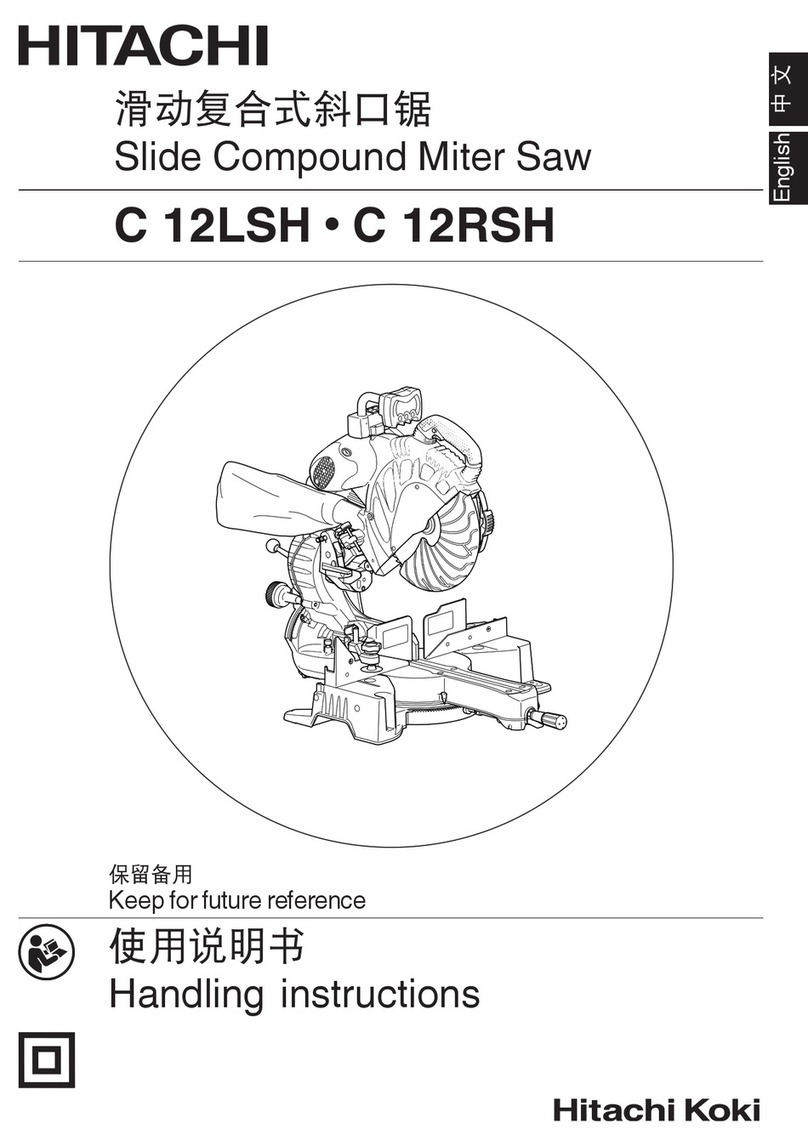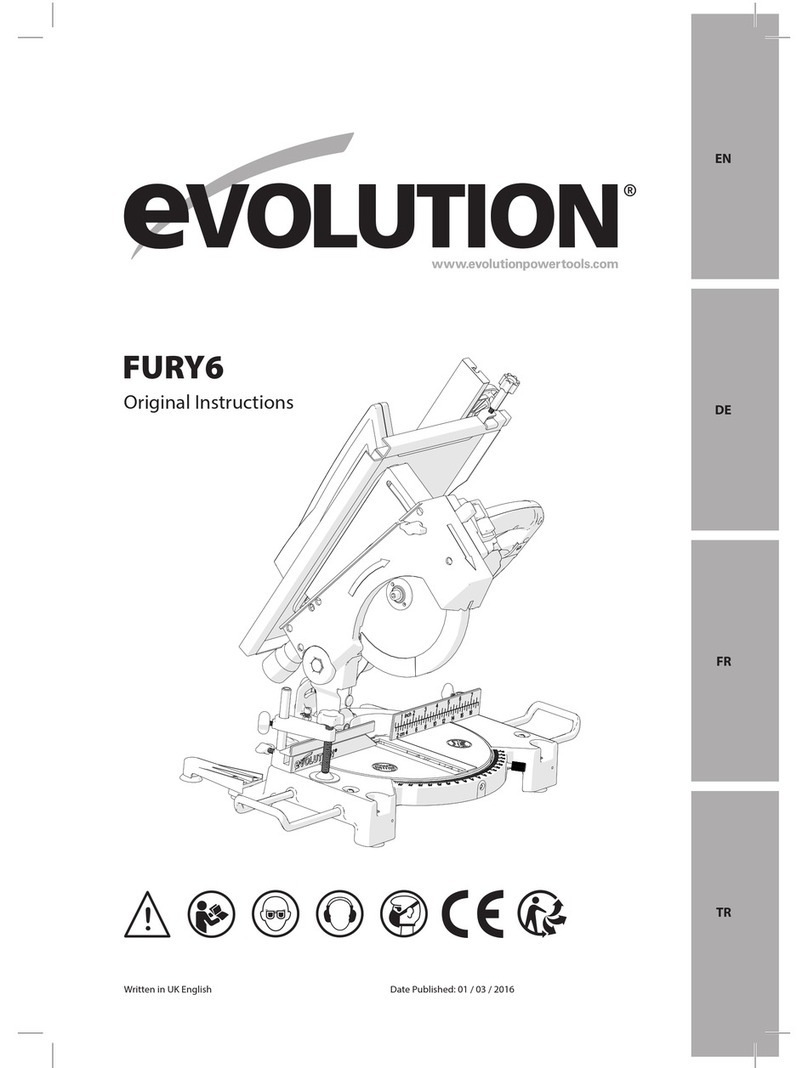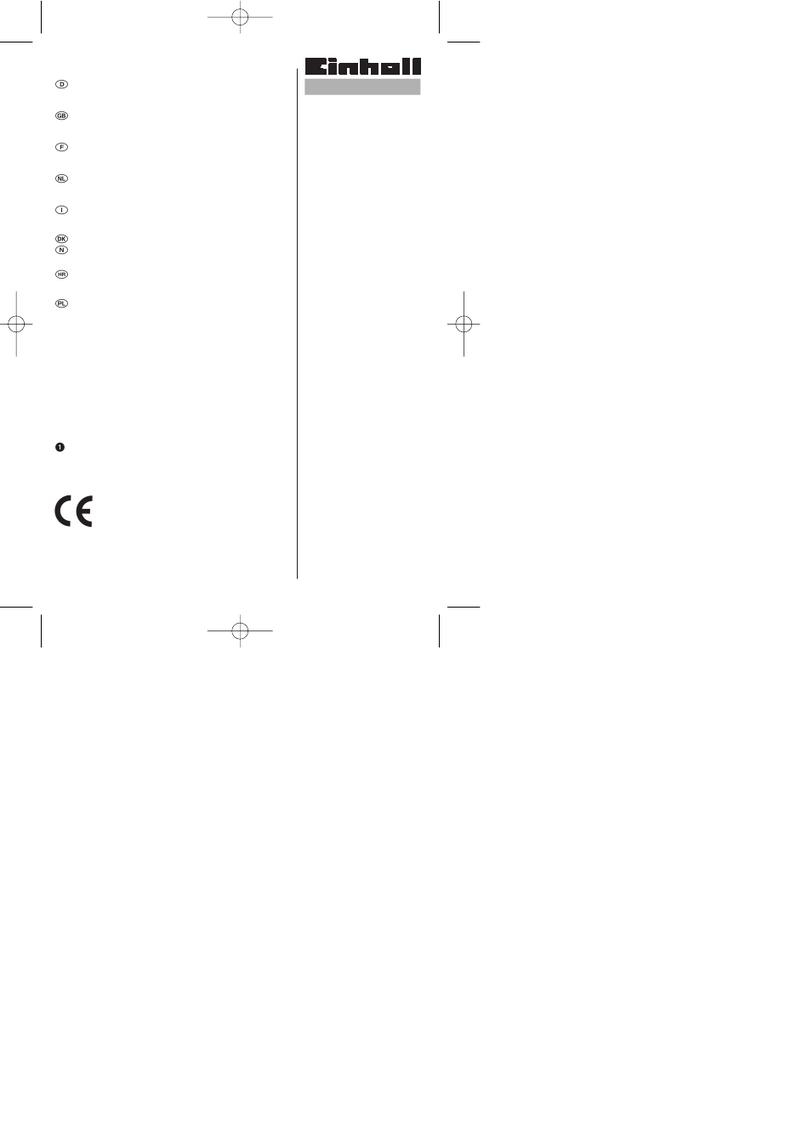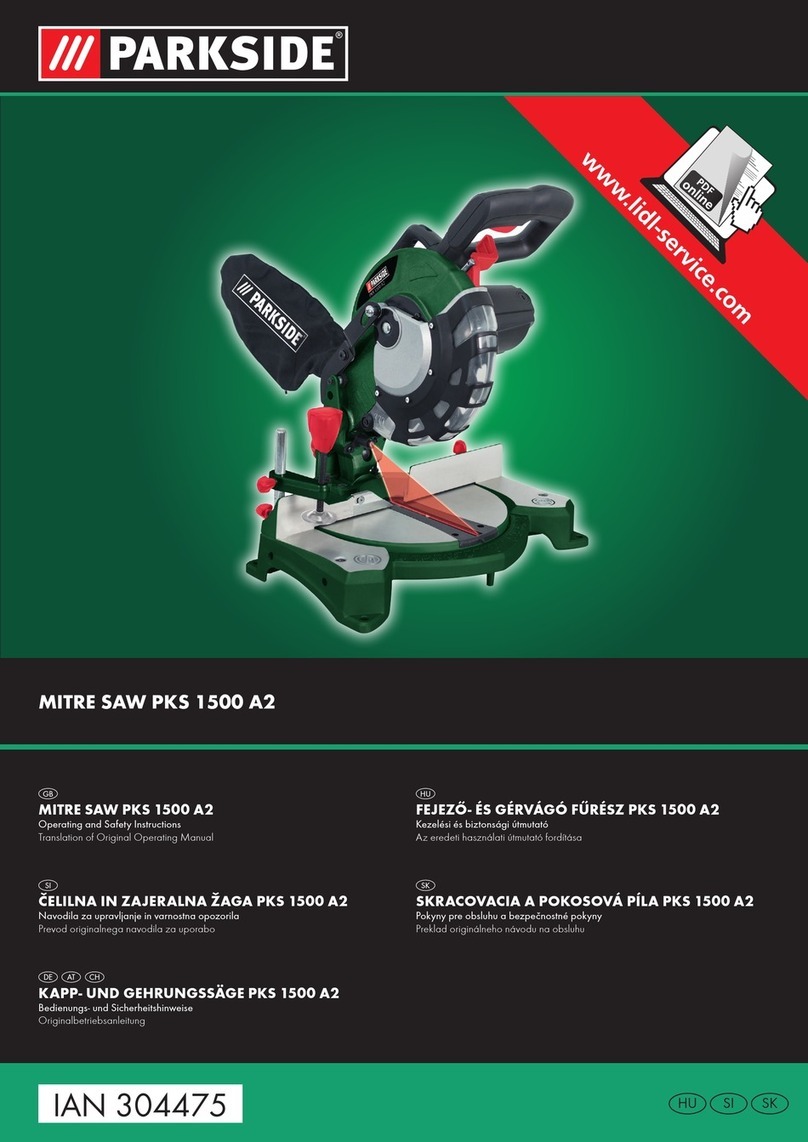11
Safety precautions
When using electric tools, the following fundamental
safetyprecautionsmustalwaysbeobservedinorderto
avoid the risk of injury, electric shock and fire hazards.
Please read and observe the instructions below before
using the tool.
1. Use protective equipment.
2. Wear suitable working clothing.
Don’t wear loose clothing, loose long hair or jewellery
asitcanbecomecaughtupinmovingpartsoftheelec-
tric tool. Wear non-slip shoes.
3. Make the working area safe.
Objects which could cause injury should be removed
from the working area. Ensure that the area is well lit.
Whenworking,keepotherpersonsoutsidetherangeof
the tool you are using.
4. Take the influences of the surrounding area into
account.
Don’texposethetooltorainorsnowanddon’toperate
it in the vicinity of flammable liquids or gases.
5. Check the tool each time before use.
Check the condition of the tool, the supply cord and
mainsplug. Don’t use itif it is damaged,incomplete or
ifthecontrolscannotbeoperatedcorrectly.Beforefur-
ther use of the tool, a guard or other part that is dam-
aged should be carefully checked to determine that it
willoperateproperlyandperformitsintendedfunction.
Check for alignment or moving parts, free running of
movingparts,breakageofparts,mountingandanyoth-
er conditions that may affect its operation. A guard or
otherpartthatis damaged should be properly repaired
orreplacedbyanauthorizedservicecentreunlessoth-
erwise indicated in this instruction manual. Have defec-
tiveswitches replaced by an authorized service facility.
Donotusethetooliftheswitchdoesnotturnitonand
off.
6. Use the correct insert tool.
Ensurethattheinserttools(sawbladesetc.)areequipped
withtheappropriateconnectionendtofitthebladeholder
on the electric tool and that they are clamped in posi-
tion correctly in the blade holder.
Use only the recommended original Hilti accessories
and auxiliary equipment.
7. Use the tool only for the purposes for which it is
intended.
Donotforcesmalltoolsorattachmentstodothejobof
a heavy duty tool. Do not use tools for purposes not
intended; for example, do not use circular saws to cut
tree limbs or logs.
8. Apply a safe working method.
Avoidunfavourablebodypositions.Alwaysensureyou
have a safe stance. Always hold the tool in both hands
when it is in use . To ensure optimum efficiency and
safetywhenworking,thecontactshoeofthetoolmust
always be pressed against the workpiece.
Alwaysusesawbladesofadequatelength.To avoid kick-
back, the end of the blade must always project at least
40 mm beyond the workpiece throughout the entire
stroke.Itwilldothejobbetterandsaferatheratefor
which it was intended.
The blade may become stuck unexpectedly. Switch off
the tool if your attention is distracted from your work.
When the tool is in use, always guide the supply cord
away from the tool to the rear.
Never carry the tool by the supply cord. Don’t unplug
thetoolbypullingonthesupplycord.Don’texposethe
supply cord to heat, oil or sharp edges. If the supply
cordbecomesdamaged while working, don’t touch it-
unplug the mains plug immediately.
Never place your fingers or a hand in front of the saw
blade when working with the saw.
9. Take care to avoid concealed cables and pipes.
Concealed electric cables or gas and water pipes pre-
sent a serious hazard if damaged while you are work-
ing.Accordingly,checktheareainwhichyouarework-
ingbeforehand(e.g.usingametaldetector).Avoidcon-
tactbetweenyourbodyandearthed/groundedobjects
such as pipes or radiators. External metal parts of the
tool may become live, for example, when an electric
cable is cut into inadvertently.
10. Avoid unintentional starting.
Don’tcarry the tool with your finger on the control switch
whileitisconnectedtothemainssupply. Check that the
tool is switched off before connecting it to the mains
supply. Pull the plug out of the mains socket when the
tool is not in use, e.g. during pauses between work,
before maintenance and when changing insert tools.
11. Keep the electric tool and insert tools in good
condition.
Followthecareandmaintenanceinstructionsandreplace
insert tools in good time. Never operate the tool when
itisdirtyorwet.Whennotinuse,toolsshouldbestored
in a dry, high or locked-up place, out of reach of chil-
dren.Dustordampnessonthesurfaceofthetoolmake
itslippery and difficult to hold and may, under unfavourable
conditions, present a risk of electric shock.
Repairstothetoolmaybecarriedoutonlybyanautho-
risedelectricalspecialistusingoriginalHiltispareparts.
Wear ear
protection Wear goggles Wear protective
gloves Wear respiratory
protection when
the work causes
dust


















